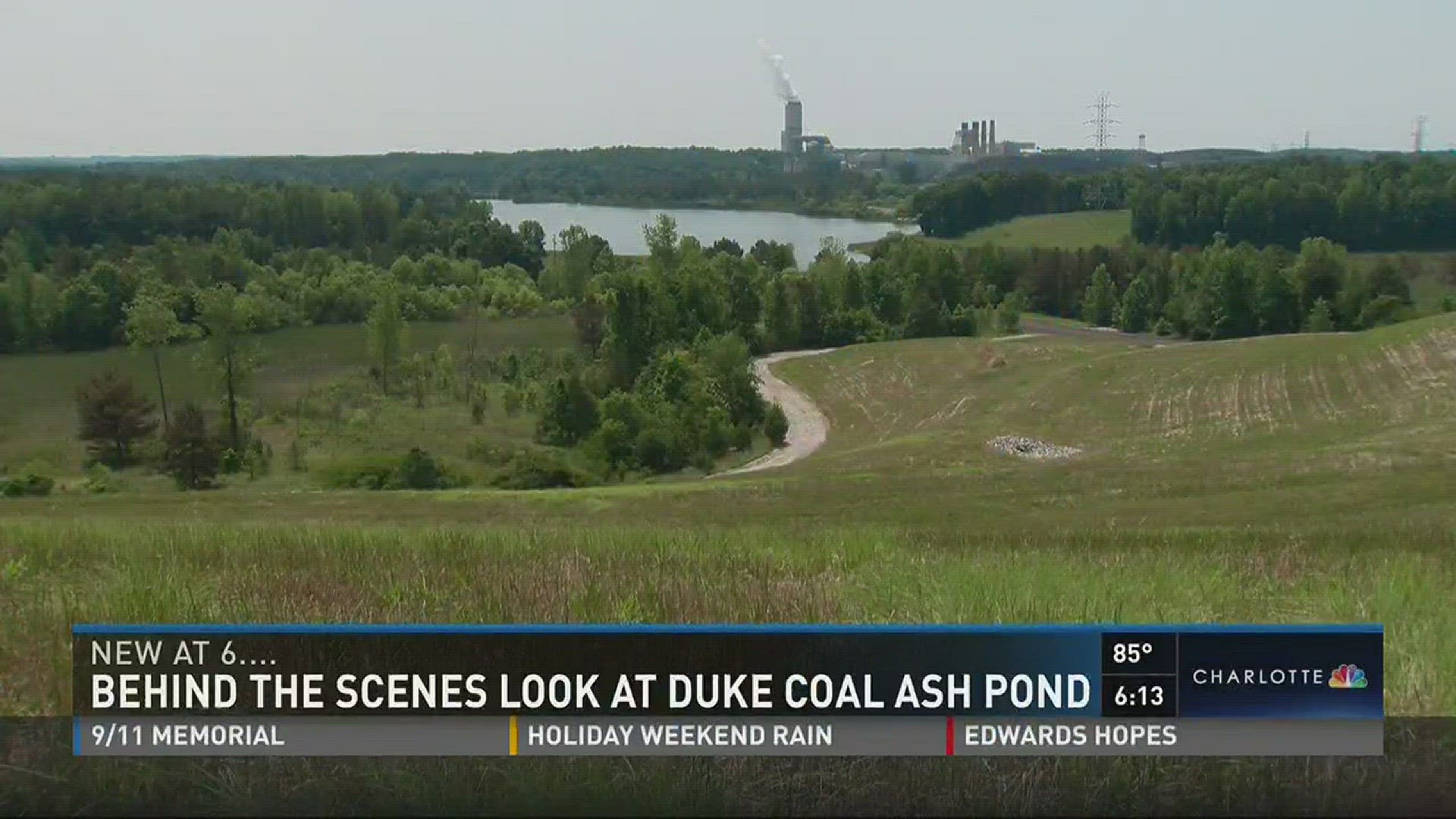TERRELL, N.C. – Duke Energy invited reporters to tour the coal ash basin at the Marshall Steam Station in Terrell, which is one of the largest in existence, covering 380 acres.
“There are about 16-million tons of of ash at the Marshall Steam Station, just in the pond itself,” said Duke spokesperson Erin Culbert, as company officials showed reporters around.
The ash from the plant that first started operating in 1965 is everywhere. You can see it in piles, and you actually drive on roads made out of it.
Around the ash pond itself, however, it is pristine, with nesting herons and even a wild deer.
However, something is going to be done with the ash because of the threat of environmental damage.
Marshall is listed by the state as an “intermediate danger,” and as such, the state requires all of this to be drained, excavated and moved out.
Duke says that would be expensive and potentially take decades.
“If we were required to excavate that material, that would equate to nearly a million truck trips,” Culbert said.
The State Department of Environmental Quality is allowing Duke to do more testing to try to show that the danger level at Marshall should be reclassified as “low.” That would allow Duke to cap the ash basin instead of excavating, a method the company says it prefers.
“One of the benefits of capping is that it can be completed much more quickly, so it would take a few years to cap an ash basin after the water is safely removed,” Culbert said.
Environmentalists, though, worry that capping a basin does not ensure that material could still not leak out.
The current deadline Duke faces is 2024 to close basins like this one, but DEQ is asking for a change in the regulations that would allow for a reconsideration of the risk at Marshall in 18 months.
So, Duke says the final decision on how and when the coal ash at Marshall is disposed of depends on what options the state eventually makes available to the company.

